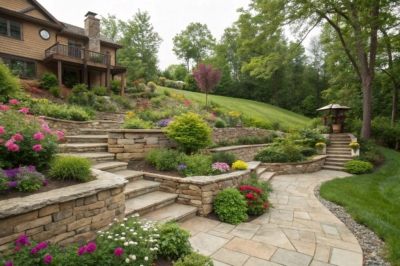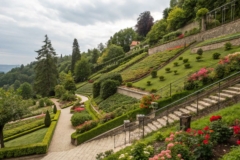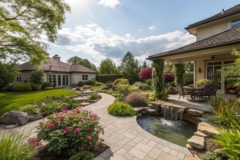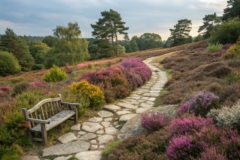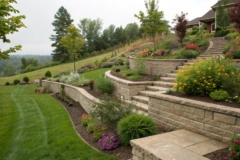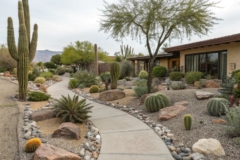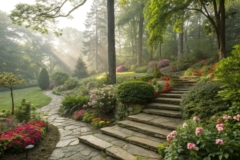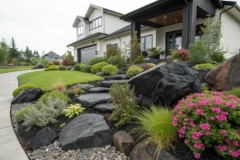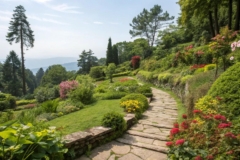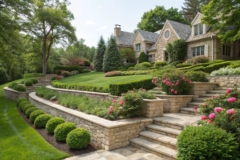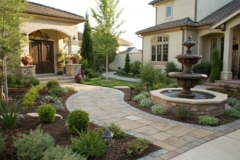1. Terraced Gardens for a Layered Look
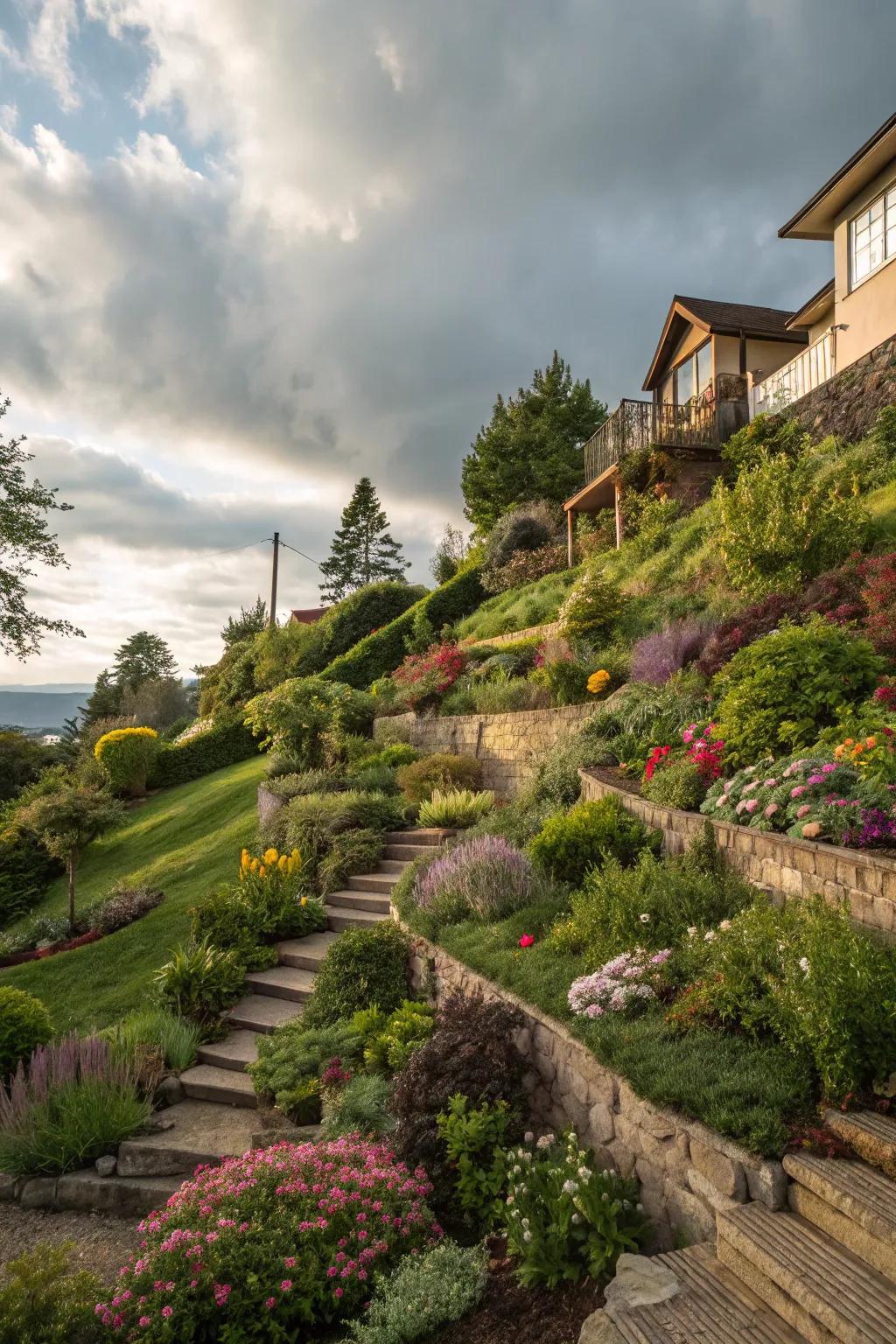
Creating terraced gardens is like crafting your very own outdoor steps of beauty. I’ve turned a steep slope into a multi-level garden, perfect for diverse plantings and easy maintenance.
Check if these fit your needs:
- Garden Terracing Kit: Easily create beautiful garden terraces with this modular and adjustable terracing kit.
- Decorative Garden Edging Stones: Define garden tiers with these elegant and durable decorative edging stones.
- Slope Stabilization Landscape Fabric: Prevent erosion and keep soil in place with this high-quality slope stabilization fabric.
2. Retaining Walls for Stability
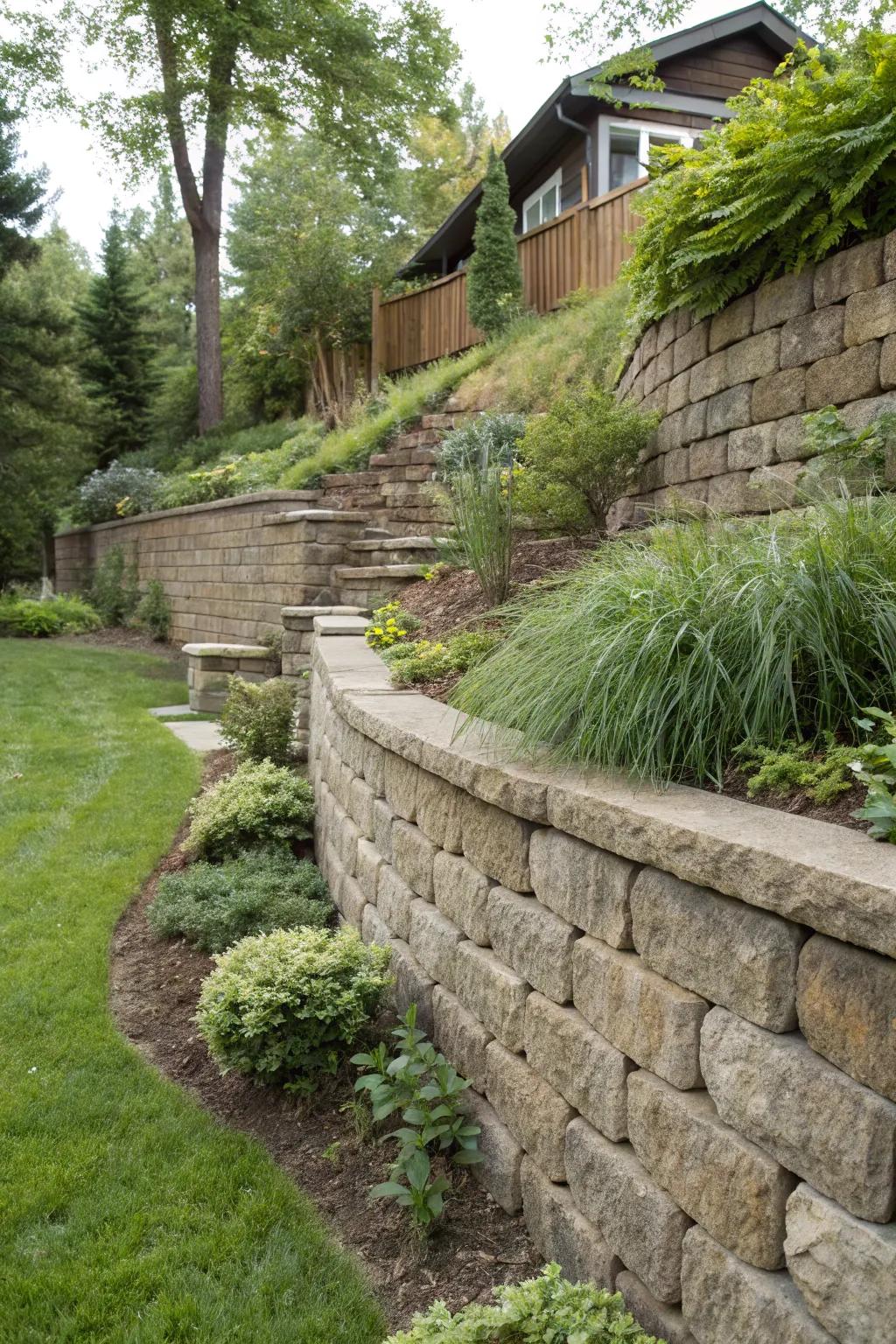
Building retaining walls can transform a daunting slope into a series of usable spaces. My backyard’s retaining wall has not only stabilized the soil but also created a perfect spot for a cozy nook.
Give these a look:
- Garden Wall Blocks: Elevate your landscape design with durable garden wall blocks for stylish and stable retaining walls.
- Geogrid Soil Stabilization: Enhance the durability of your retaining walls with effective geogrid soil stabilization solutions.
- Outdoor Waterproof LED Lights: Brighten up your retaining walls with energy-efficient outdoor waterproof LED lighting fixtures.
3. Outdoor Lighting for Nighttime Magic
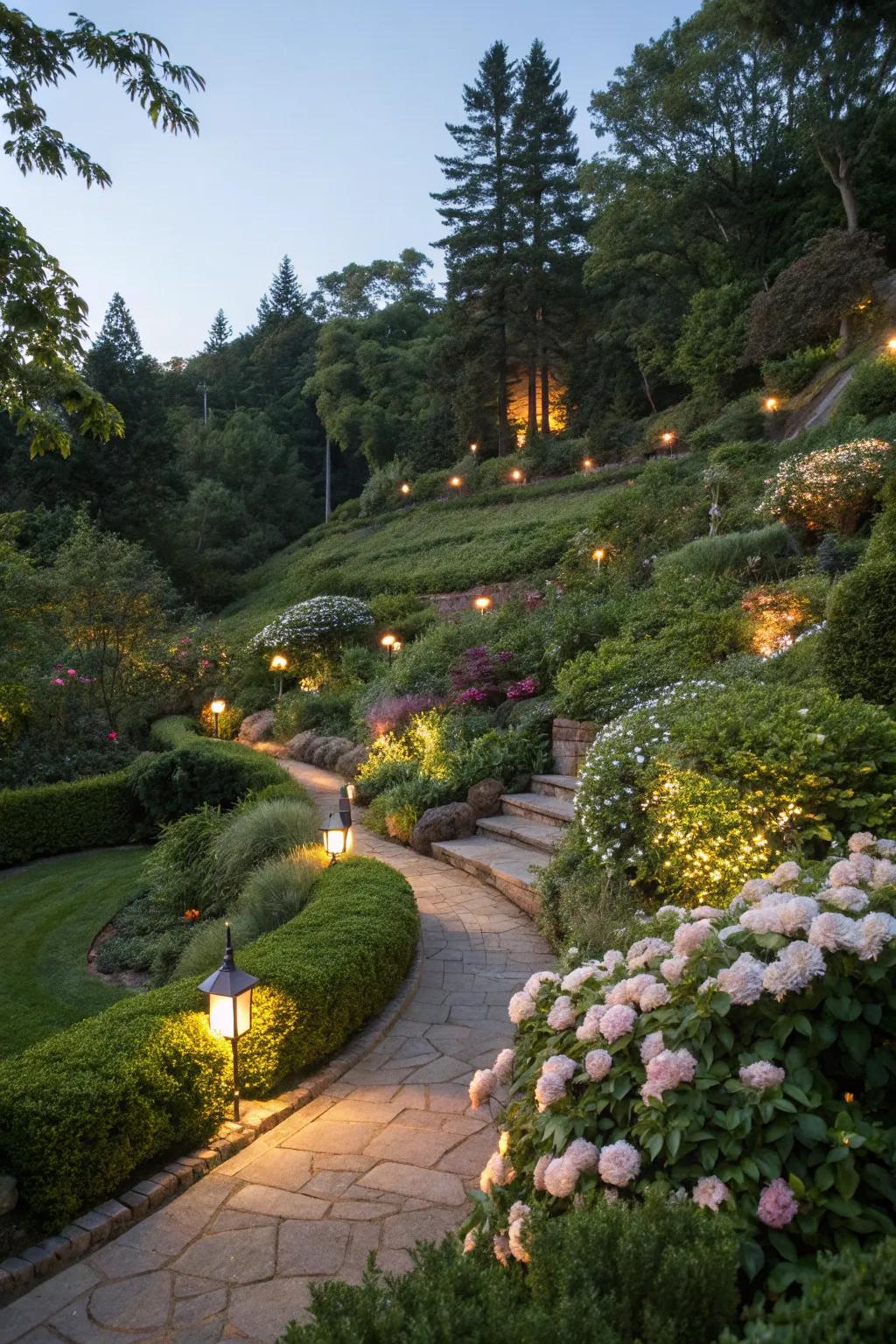
Enhance your slope with outdoor lighting to create a magical nighttime ambiance. I love how my garden glows with strategically placed lights after sunset.
Consider these options:
- Solar Pathway Lights: Illuminate your garden path elegantly with eco-friendly solar pathway lights for charming nighttime vibes.
- LED String Lights: Drape LED string lights over shrubs and trees to create a magical atmosphere after sunset.
- Landscape Spotlights: Highlight key features of your slope with adjustable landscape spotlights for dramatic lighting effects.
4. Tiered Vegetable Beds for Fresh Produce
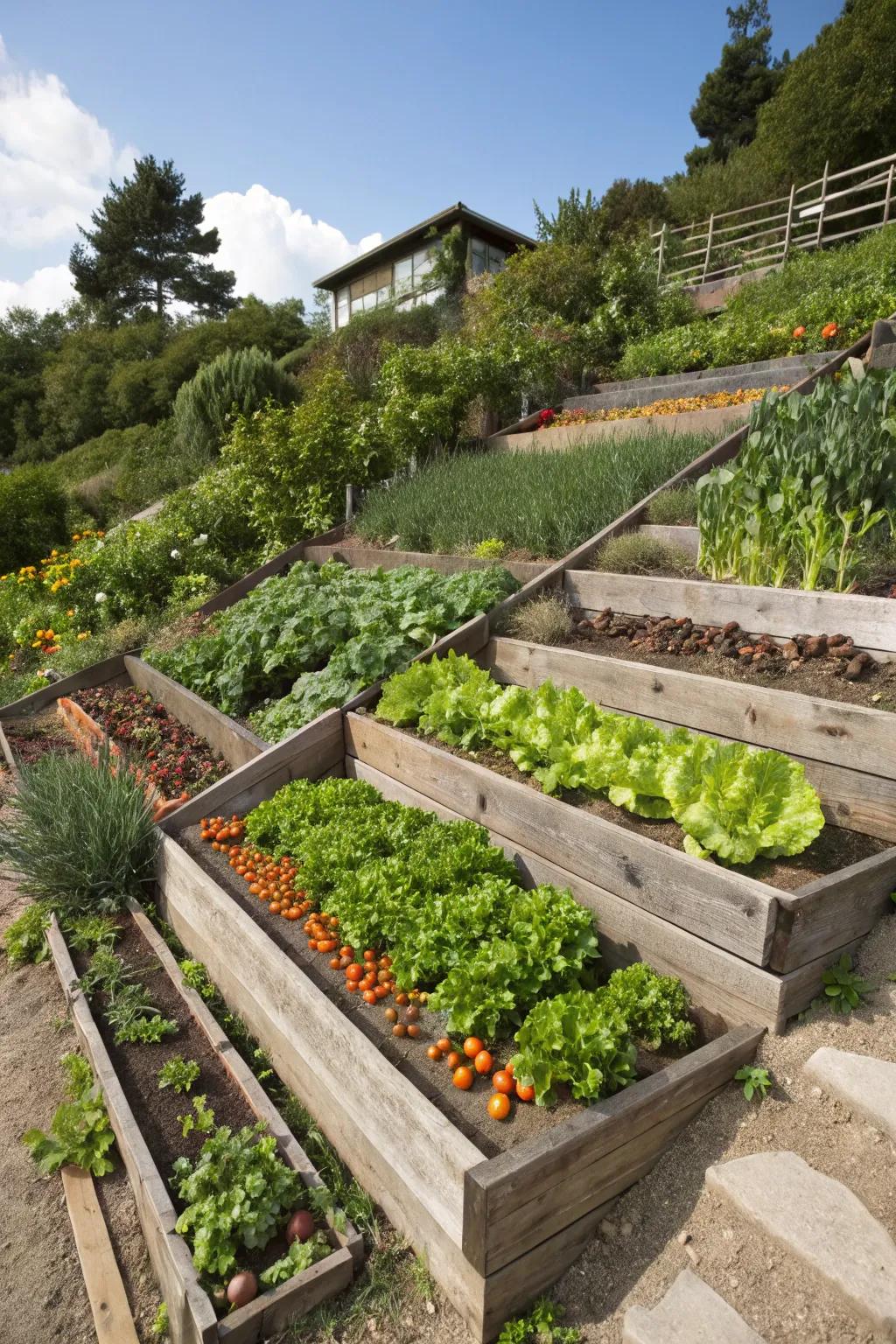
Tiered vegetable beds allow for easy access and abundant harvests on a slope. Growing my own veggies on the hill has been both rewarding and delicious!
Possibly handy products:
- Wooden Raised Garden Bed Kit: Easily assemble your tiered garden and enjoy fresh veggies with this durable wooden kit.
- Organic Vegetable Seed Pack: Kickstart your slope garden with these organic seeds for a healthy, flavorful harvest.
- Drip Irrigation Kit for Gardens: Ensure efficient, consistent watering on sloped beds with this easy-to-install drip irrigation kit.
5. Artistic Rock Gardens
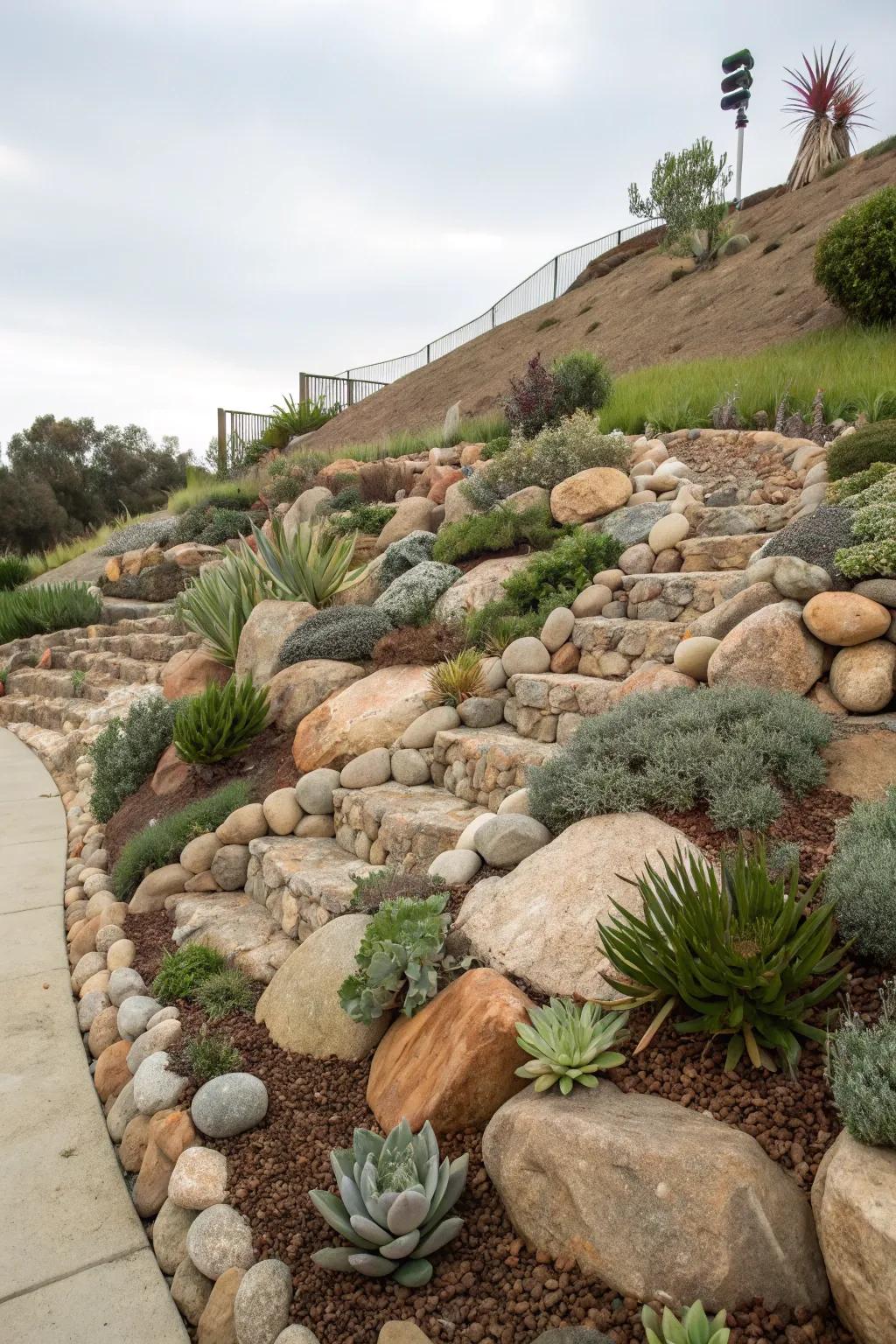
An artistic rock garden can turn a challenging slope into a stunning visual feature. I’ve arranged rocks and succulents to create a mini desert oasis on my incline.
Might be a good match:
- Decorative Landscaping Rocks: Enhance your rock garden with durable, stylish stones. Perfect for sculpting a captivating landscape.
- Succulent Plant Variety Pack: Transform your garden with a variety of vibrant succulents. Easy to care for and stunning.
- Drip Irrigation System Kit: Ensure your garden thrives with a convenient and efficient watering system. Ideal for slopes.
6. Boulder Accents for Bold Statements
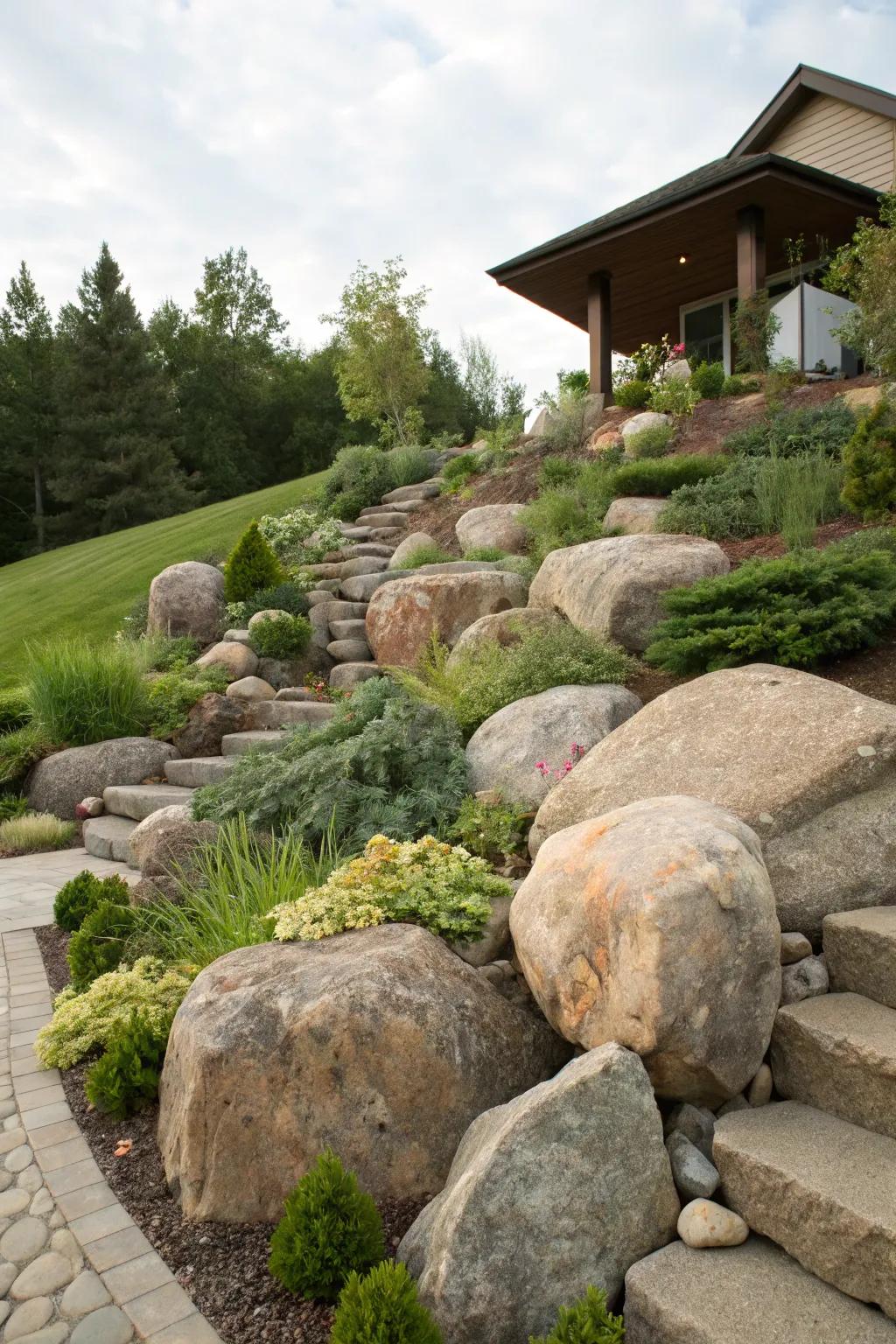
Strategically placed boulders can serve as bold focal points in your slope landscape. In my yard, they double as both art and natural seating.
You might give these a try:
- Outdoor Boulders for Landscaping: Transform your yard with stunning boulders that act as natural seating and artistic elements.
- Garden Pathway Stone Set: Create a serene garden pathway with durable and natural stone steps that blend seamlessly.
- Decorative Gravel for Landscaping: Enhance your slope landscape with decorative gravel that complements and contrasts with large boulders.
7. Seating Areas with a View
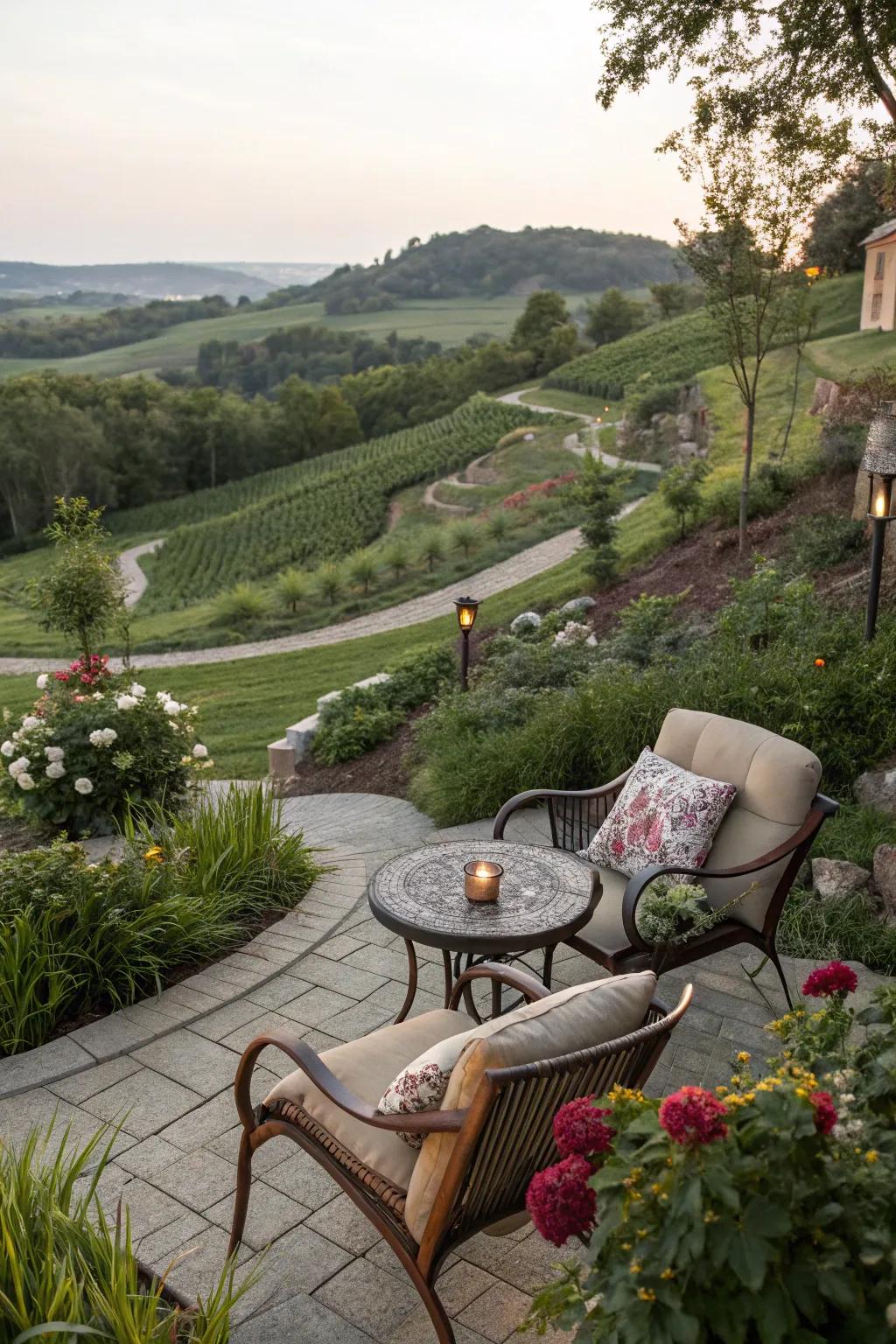
Incorporate a seating area at the top or middle of your slope for a perfect retreat. I enjoy my morning coffee with a view, thanks to strategically placed benches.
Try these:
- Outdoor Patio Chair Set: Enjoy stunning vistas with comfortable and stylish patio chairs designed for relaxation and durability.
- Small Patio Side Table: Place your morning coffee on a chic patio side table, perfect for compact outdoor spaces.
- Decorative Outdoor Cushion Set: Add comfort and charm to your outdoor seating with vibrant, weather-resistant cushions.
8. Native Plants for Low Maintenance
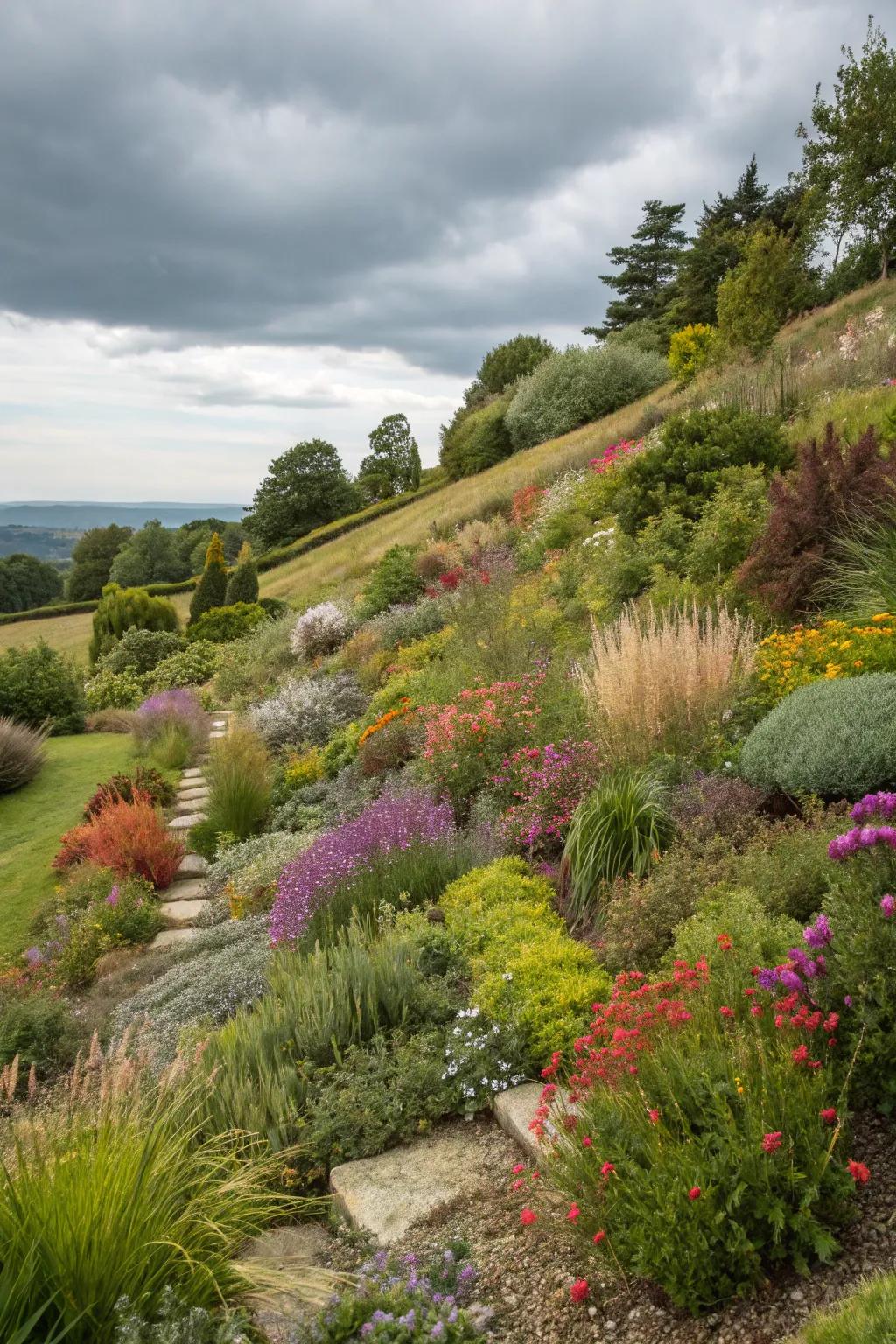
Using native plants on your slope is a win for both beauty and ease of care. In my experience, they handle the local climate effortlessly, making them a smart choice for any garden.
Useful items to consider:
- Drought-Tolerant Wildflower Seed Mix: Enhance your slope’s beauty with native wildflowers that thrive effortlessly in local climates.
- Organic Plant Fertilizer for Native Plants: Boost your native plants’ health with a natural fertilizer tailored for optimal growth.
- Low Maintenance Ground Cover Plants: Choose native ground covers to prevent erosion and reduce maintenance on your slope landscape.
9. Ornamental Grasses for Texture
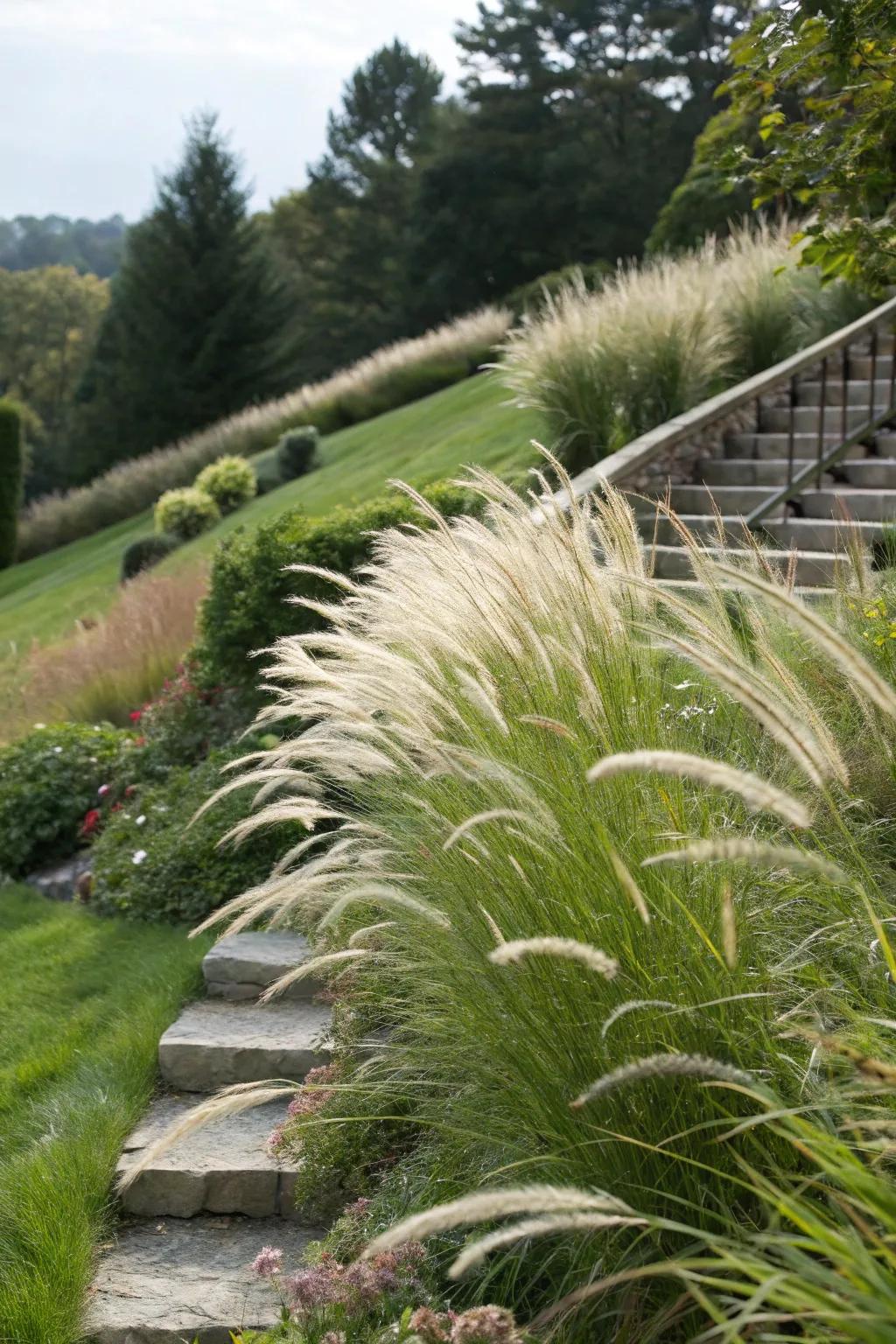
Introduce ornamental grasses to add texture and movement to your sloped landscape. Their graceful sway in the Texas breeze has become a highlight in my garden.
Maybe worth checking out:
- Ornamental Grass Seed Pack: Transform your landscape with versatile grasses that offer dynamic texture and natural beauty.
- Decorative Garden Stones: Enhance your garden’s design with decorative stones that complement the swaying grasses beautifully.
- Garden Edging for Sloped Landscapes: Define your sloped garden areas with adaptable edging, ensuring clean lines and lawn maintenance ease.
10. Wooden Structures for Character

Adding wooden structures, like arches or pergolas, brings character and function to a slope. I’ve found they create lovely entryways and focal points in my garden.
May just do the trick:
- Wooden Garden Pergola: Enhance your garden’s charm with a wooden pergola, perfect for climbing plants and shade.
- Trellis Archway: Create a stunning entryway with a trellis archway, inviting and elegant for any garden path.
- Outdoor Wooden Arbor: Add a rustic touch to your landscape with a durable wooden arbor, ideal for outdoor spaces.
11. Water Features for a Relaxing Touch
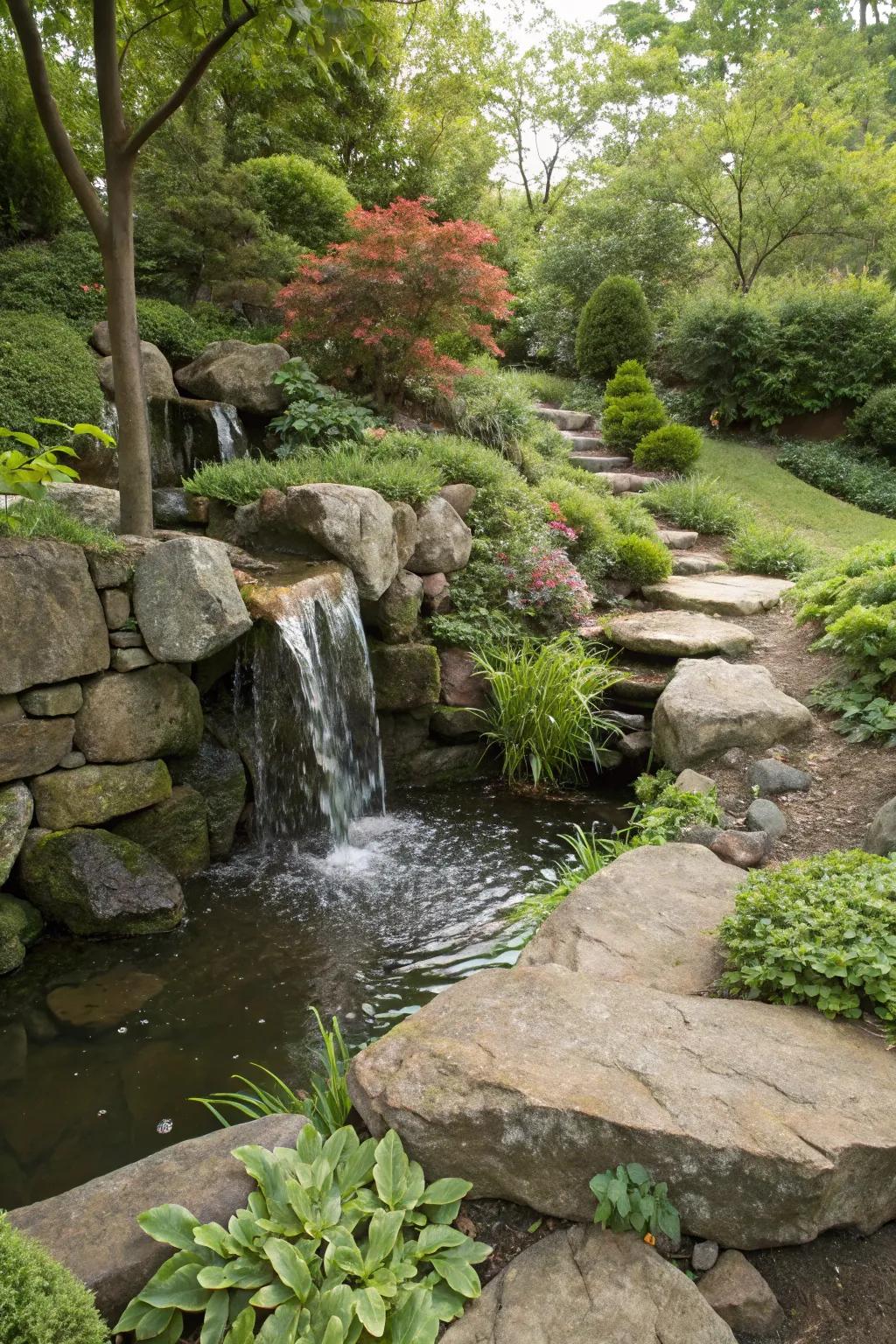
A slope is ideal for a water feature like a cascading waterfall, which adds a soothing soundscape to your garden. I love how mine creates a serene backdrop for evening relaxation.
These products might help:
- Cascading Waterfall Kit: Install a cascading waterfall kit for a tranquil garden atmosphere and peaceful soundscape.
- Submersible Water Pump: Enhance water flow with a submersible pump, creating soothing waterfall sounds in your garden.
- Pond Liner and Underlayment: Secure your pond setup with a durable liner to maintain water levels and landscape design.
12. Ground Covers for Erosion Control
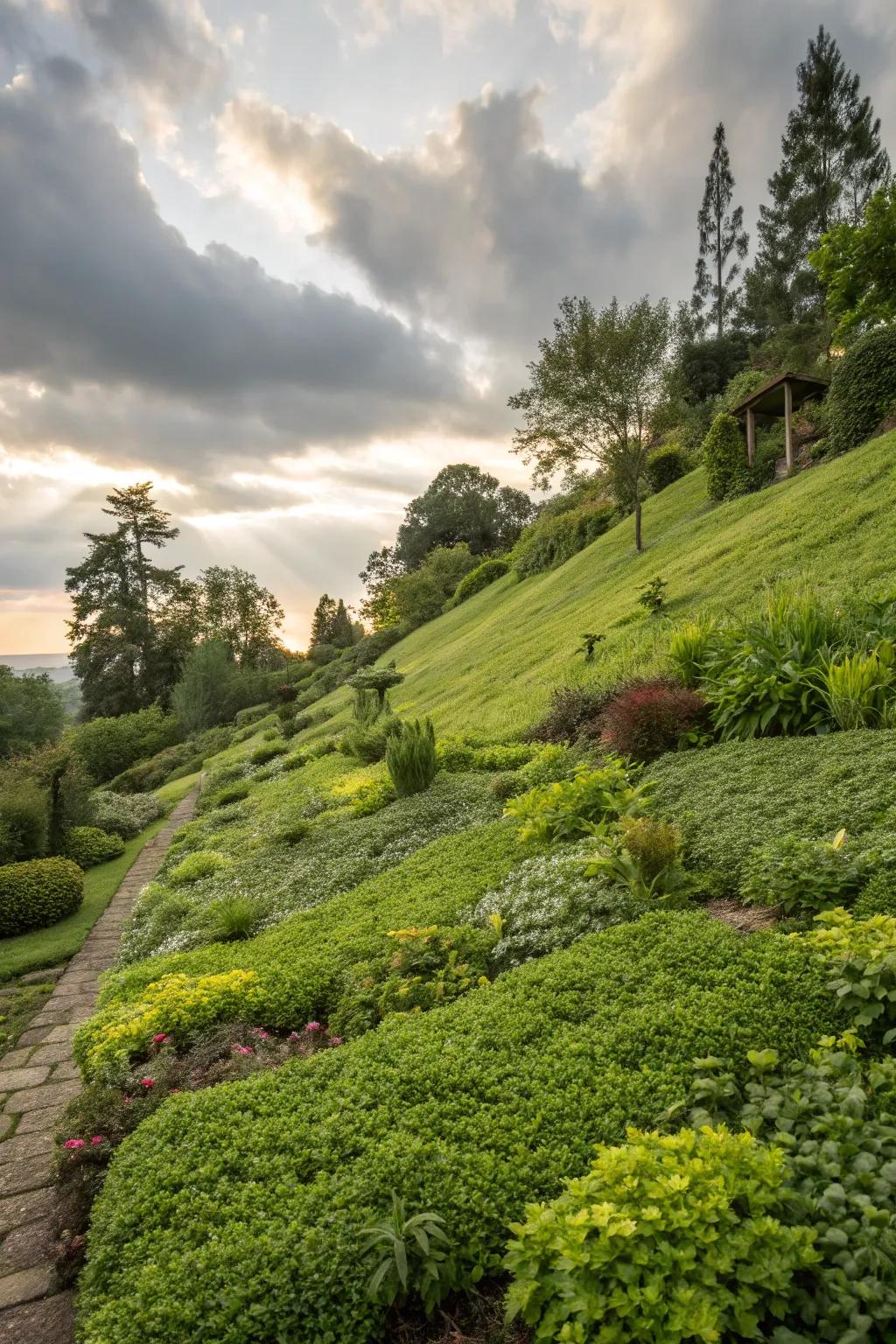
Planting ground covers helps anchor the soil and prevent erosion on your slope. These hardy plants have been my go-to for keeping everything in place.
Possibly helpful picks:
- Creeping Thyme Seed Pack: Transform your slope with a fragrant, resilient ground cover that helps control erosion beautifully.
- Sedum Live Plant Collection: Beautify your landscape with this hardy, low-maintenance sedum that helps stabilize soil effectively.
- Pro Ground Cover Mulch Roll: Secure your slope with durable mulch that prevents erosion and promotes healthy plant growth.
13. Stone Steps for Easy Access
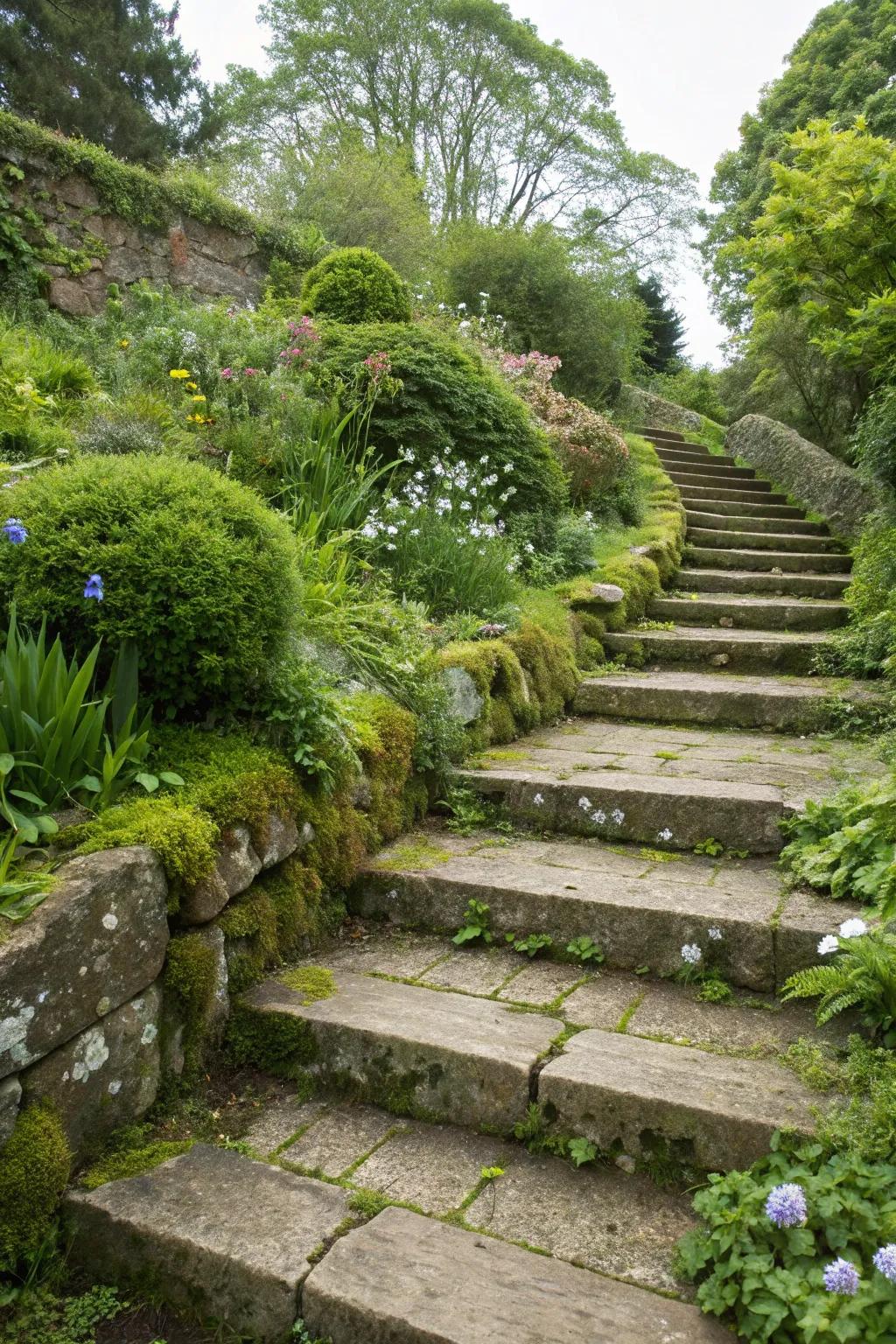
Install stone steps to make navigating your slope both safe and stylish. These steps have made my garden accessible without compromising its beauty.
A few relevant products:
- Natural Stone Pavers: Enhance your garden with natural stone pavers, adding both style and functionality to your space.
- Garden Step Lights: Illuminate your stone steps with elegant garden lights for safety and a charming evening ambiance.
- Landscaping Adhesive: Secure your stone steps with durable adhesive, ensuring long-lasting stability and peace of mind.
14. Rain Gardens for Water Management
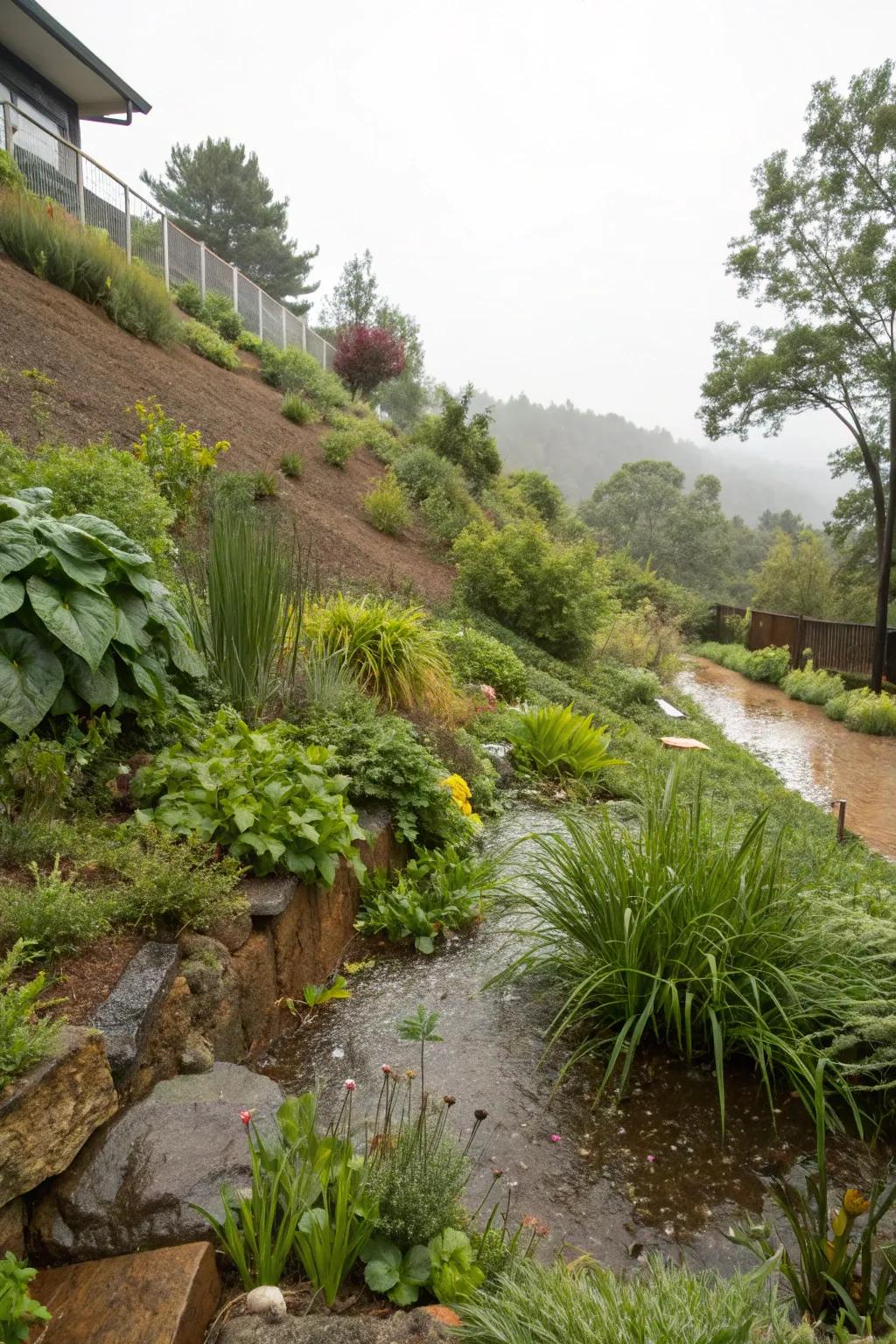
A rain garden at the base of your slope can effectively manage water runoff. I’ve found it to be a beautiful and practical solution to drainage issues.
You might like:
- Rain Garden Plant Selection Kit: Choose the right plants for effective runoff control and a lush, thriving rain garden.
- Garden Soil Moisture Meter: Monitor soil moisture levels to ensure optimal plant growth and prevent over-watering.
- Heavy Duty Landscaping Fabric: Use durable fabric to prevent erosion and maintain soil stability in your rain garden.
15. Stone Pathways for Natural Charm
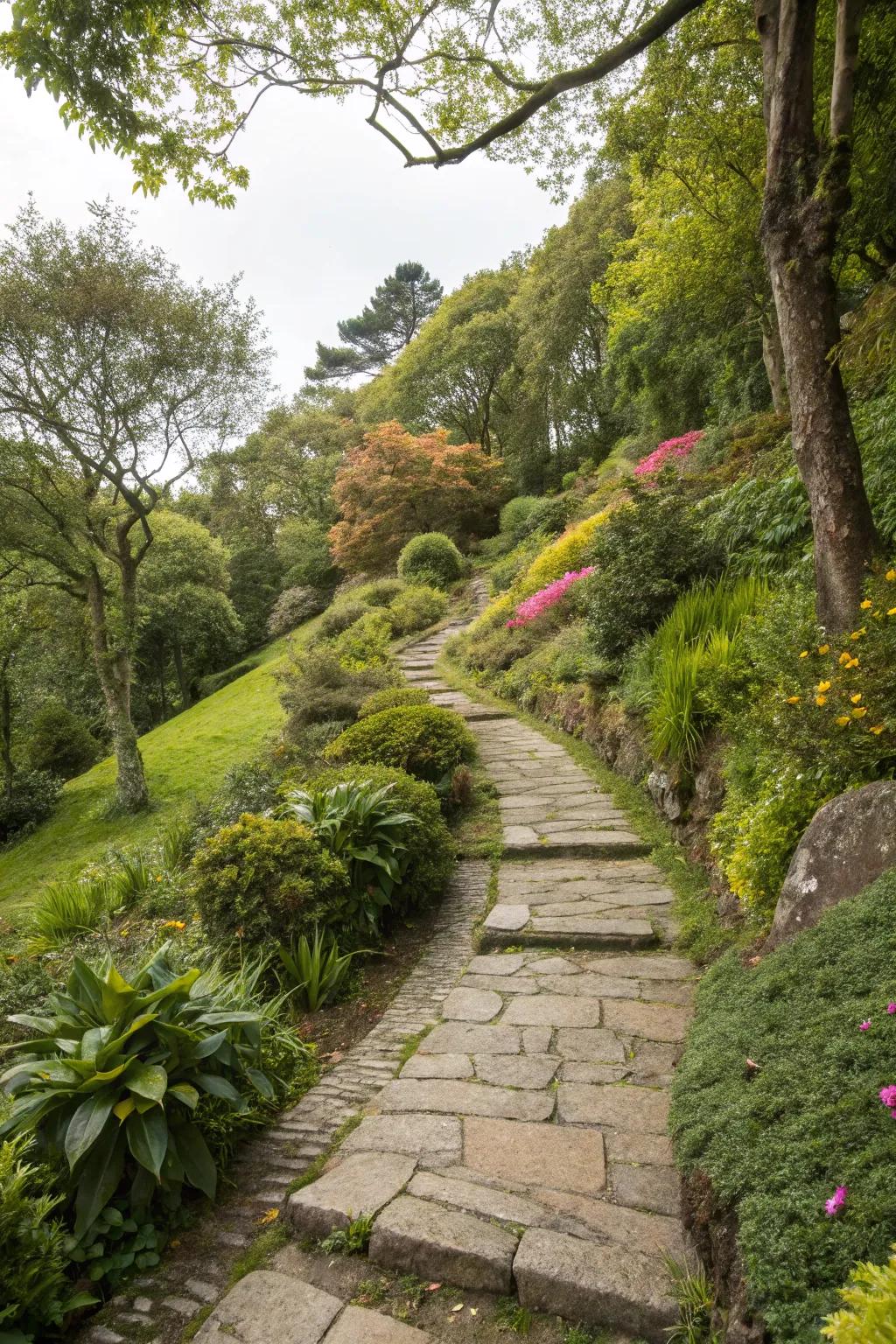
A stone pathway weaves a charming route through your slope, adding both functionality and aesthetic flair. In my garden, these paths are the perfect way to explore different levels without losing your footing.
Check these products out:
- Garden Stepping Stones: Enhance your pathway’s elegance and safety with durable, weather-resistant garden stepping stones.
- Pathway Lighting Stakes: Illuminate your stone pathways beautifully with energy-efficient pathway lighting stakes.
- Landscape Edging Kit: Define your stone pathways with a flexible and easy-to-install landscape edging kit.
16. Wildflower Meadows for a Natural Look
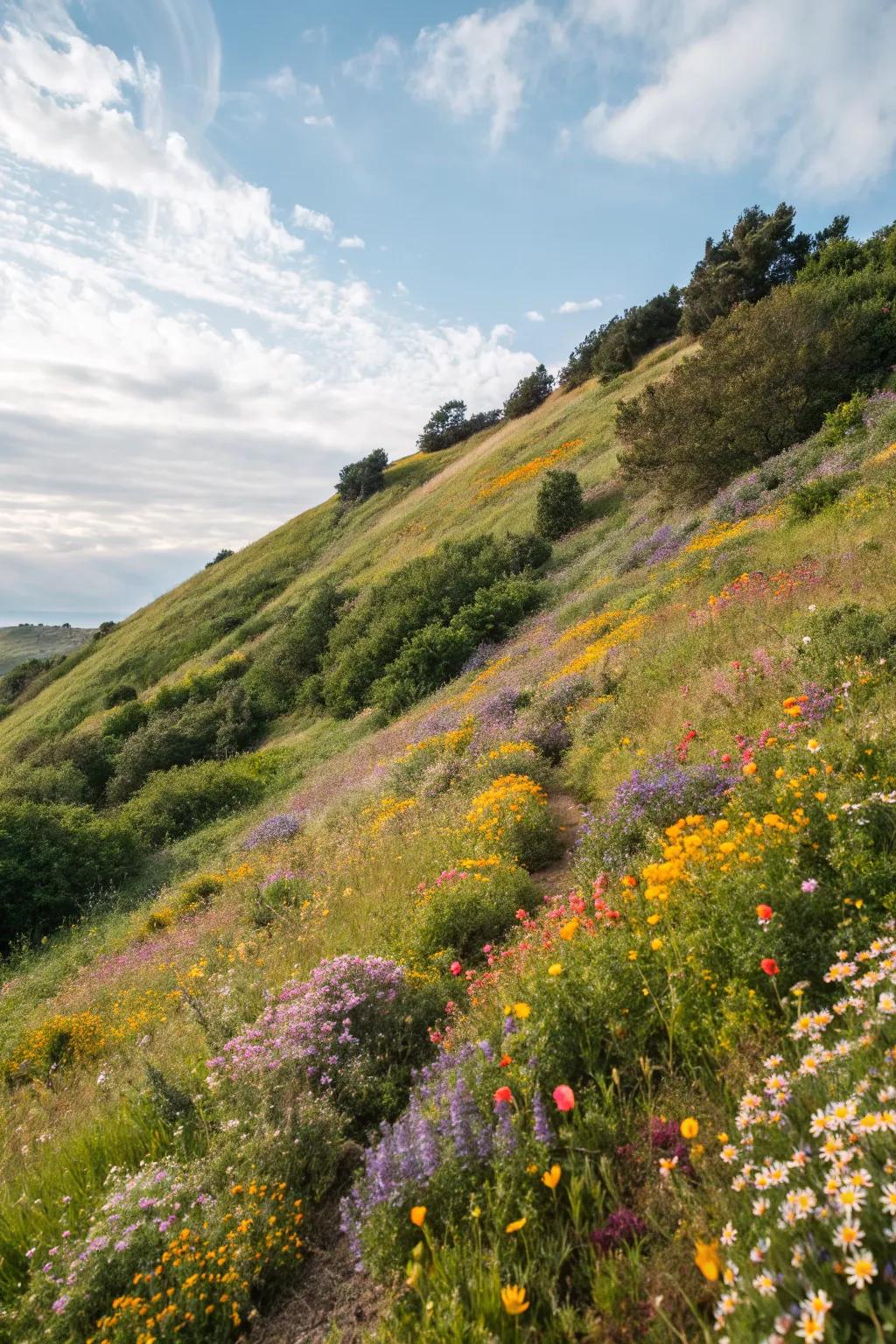
Transform your slope into a wildflower meadow for a burst of seasonal color. It’s like having a piece of the Texas prairies right in my backyard.
Some ideas to consider:
- Wildflower Seed Mix: Transform your slope with vibrant wildflowers. Easy to plant for stunning seasonal color.
- Garden Trowel Set: Equip yourself with essential tools to effortlessly sow your wildflower meadow.
- Organic Fertilizer: Boost your wildflowers’ growth with this organic fertilizer. Ideal for lush and healthy plants.
